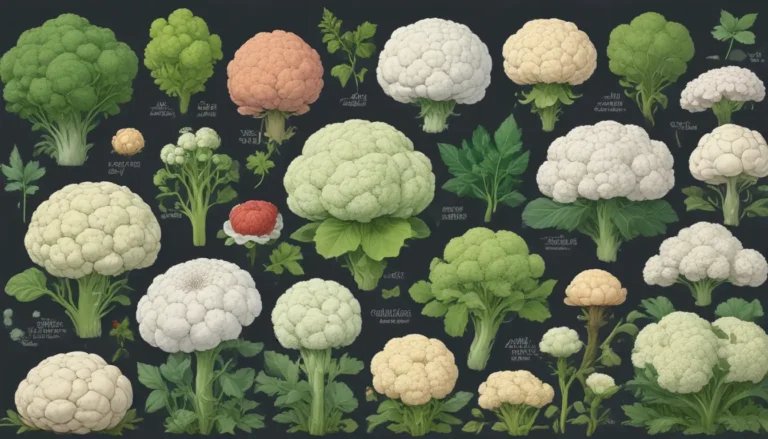The Complete Guide to Growing Hazelnut Trees: Everything You Need to Know

As a new homeowner, one of the things I was most excited about was having the opportunity to grow my own fruit and nut trees. Hazelnut trees, also known as filberts, quickly caught my attention with their relatively quick growth and delicious nuts that can be harvested within three to five years.
In this comprehensive guide, I will walk you through everything you need to know about growing hazelnut trees, from their origins and cultivation to tips for managing pests and diseases. Let’s dive in and learn how you can grow your own hazelnut trees at home.
What Are Hazelnut Trees?
Hazelnut trees belong to the Corylus genus and encompass several species that produce the edible nuts we commonly enjoy. These trees are part of the birch family, Betulaceae, and can be found growing as shrubs or small trees in USDA Hardiness Zones 4 to 9.
Key Characteristics of Hazelnut Trees:
– Typically range from eight to 20 feet tall
– Have fuzzy, heart-shaped, serrated leaves
– Produce showy yellow catkins in early spring
– Bear large nuts encased in papery husks in summer or fall
Cultivation and History
Hazelnuts are native to many parts of the Northern Hemisphere and have a rich history. They have been revered for their nutritional value and healing properties throughout centuries, with mentions in various religious texts and mythologies.
These nuts are not only valued for their edible fruits but also for their wood, which is used in various products such as baskets and tool handles. Hazelnuts are a versatile crop and are even a key ingredient in some popular food items like chocolate spread and liqueurs.
Propagation
If you’re eager to start growing hazelnut trees, you have several propagation options to choose from. Whether you prefer to start from seed, transplant nursery stock, or grow from runners, there’s a method that suits your preferences and timelines.
Propagation Methods:
– From Seed
– From Seedlings or Transplanting
– From Runners
How to Grow
To successfully grow hazelnut trees, you’ll need to provide them with the right conditions and care. These trees thrive in full sun or part shade, requiring at least four hours of direct sunlight each day for optimal nut production.
Tips for Growing Hazelnut Trees:
– Choose two or more varieties for pollination
– Plant in a location with adequate sunlight
– Prune to remove suckers or shape into a tree
Cultivars and Species to Select
With 26 different species in the Corylus genus, you have a variety of cultivars and hybrids to choose from. These cultivars are selected for their nut production, disease resistance, and ornamental value, providing you with plenty of options to grow hazelnut trees in your garden.
Popular Cultivars:
– Barcelona
– Contorta
– Ennis
– Hall’s Giant
– York
Managing Pests and Disease
Like any crop, hazelnut trees are susceptible to pests and diseases that can impact their growth and productivity. By being aware of common issues such as herbivores, insects, and diseases, you can take proactive measures to protect your hazelnut trees and ensure a healthy harvest.
Common Hazelnut Tree Pests and Diseases:
– Herbivores such as deer, rabbits, and squirrels
– Insects like Filbert Worm and Nut Weevils
– Diseases including Eastern Filbert Blight, Armillaria Root Rot, Bacterial Blight, and Bacterial Canker
Harvesting and Preserving
After patiently waiting for your hazelnut trees to mature, you’ll be rewarded with a bountiful harvest of delicious nuts. Once the nuts ripen in the autumn, you can easily collect them by raking them off the branches or using a tarp to gather them.
Steps for Harvesting and Preserving Hazelnuts:
– Dry the nuts to remove husks
– Store in shells or shell and refrigerate for an extended shelf life
Recipes and Cooking Ideas
With a supply of homegrown hazelnuts at your disposal, you can explore a range of culinary possibilities. From savory dishes to decadent desserts, hazelnuts can add a unique and flavorful touch to your meals.
Hazelnut Recipe Ideas:
– Pumpkin Kamut with Pecorino and Hazelnuts
– Dark Chocolate Hazelnut Truffles
Quick Reference Growing Guide
For quick reference, here’s a summary of key information on growing hazelnut trees:
Growing Hazelnut Trees Quick Reference Guide:
– Plant Type: Nut tree
– Water Needs: Moderate
– Hardiness (USDA Zone): 4-9
– Exposure: Full sun to part shade
– Time to Maturity: 3-5 years
– Spacing: 15-20 feet
– Height: 8-20 feet
– Spread: 5-15 feet
Go Nuts for Hazelnuts
Growing hazelnut trees can be a rewarding experience that allows you to enjoy homegrown nuts and enhance your culinary creations. By following the tips and guidelines provided in this guide, you can successfully cultivate hazelnut trees in your own garden.
If you’re currently growing hazelnut trees or planning to start, feel free to share your experiences and tips in the comments below. And for more information on growing nut trees, check out our other guides on pecans, macadamia nuts, and almonds.
As you embark on your hazelnut growing journey, remember to enjoy the process and savor the fruits of your labor when you harvest your first batch of fresh hazelnuts. Happy growing!
With this expanded and enriched guide, readers can now delve deeper into the world of hazelnut tree cultivation, from propagation to harvest, and discover new insights and tips for growing their own nut-bearing trees. By infusing the content with additional details and practical advice, this comprehensive guide aims to empower readers with the knowledge and resources they need to successfully cultivate hazelnuts in their own gardens.





